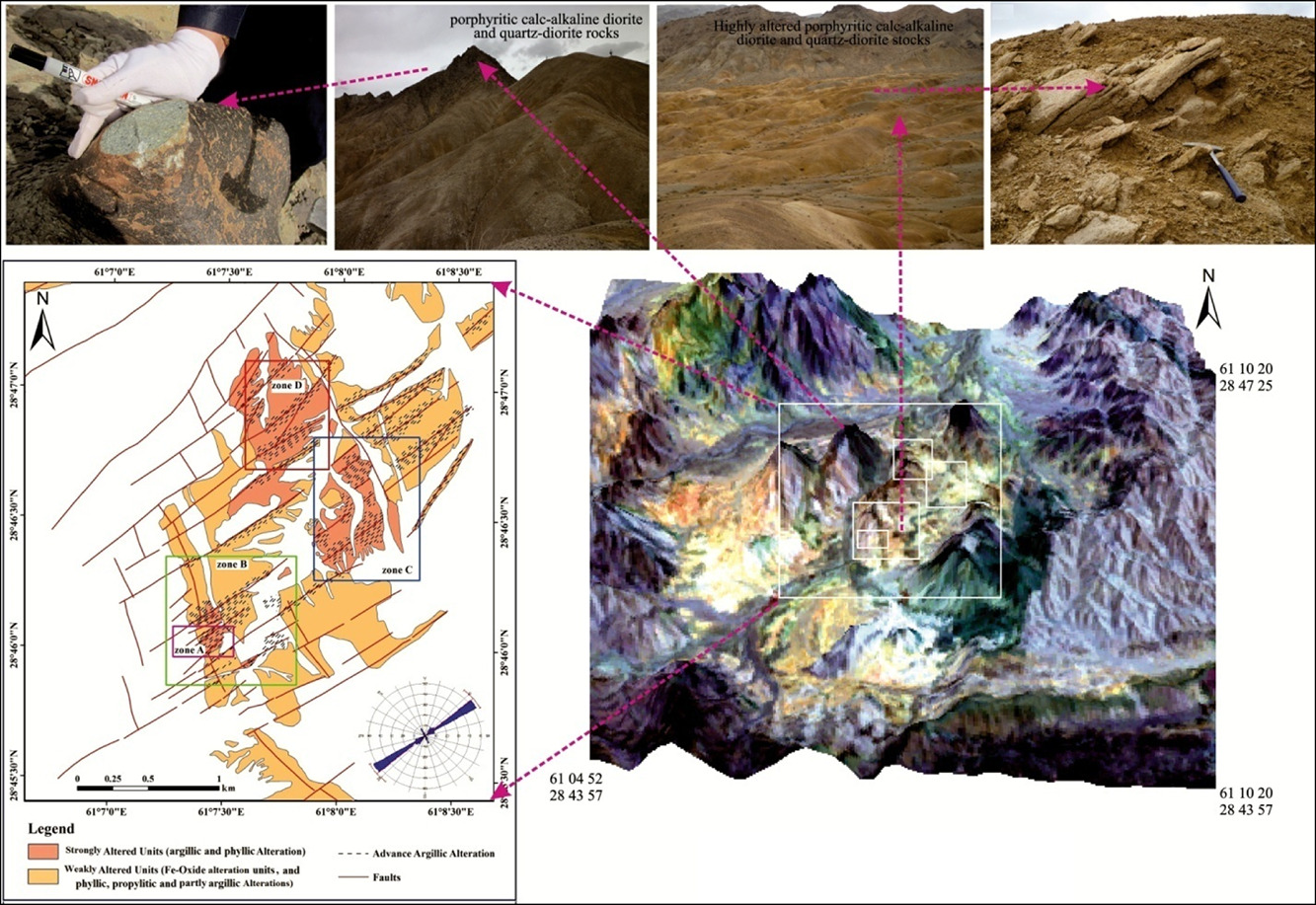Dr. Behnam Sadeghi from EarthByte Group has published this paper recently in the journal “Geochemistry-Chemie der Erde” (Special Issue of “Mineral exploration: a journey from fieldwork, to laboratory work, computational modelling and mineral processing”). This research is part of a research project with the University of Neyshabur, which has been done in SE Iran.

Abstract
Recognition of geochemical anomalies is a pivotal assignment in exploration projects. This study aims to delineate different Au Cu geochemical anomalies using number-size (N-S) and concentration-area (C-A) multifractal models in the Siah Jangal area, SE Iran. In this research, lithogeochemical datasets were applied for the exploration of Au and Cu. A comparison between geochemical anomaly maps based on the N-S and C-A fractal models shows the N-S fractal modeling is a powerful tool for separation of weak elemental geochemical anomalies in all of sampling zones. Based on a comparison between the results of these two methods and field studies, the geochemical anomaly zones, defined by the N-S fractal model, are more accurate than those recognized by the C-A fractal model. The obtained results of the N-S and C-A fractal models have been interpreted with the extensive set of information including structural interpretation, geological and alteration data. Au and Cu mineralization in the Siah Jangal area are hosted mainly by Oligocene-Miocene sub-volcanic rocks, especially strongly altered porphyric quartz diorite, hornblende diorite and diorite. Moreover, the positive dependence between various alteration zones and high concentrations of Au and Cu proves that strongly anomalous areas are correlated with these alteration zones. High grade Au (> 1000 ppb) and Cu (>150 ppm) are associated with the altered sub-volcanic rocks in the northern, eastern, and SW parts of the study area. Therewith, the strong anomaly populations are mostly occurred within the fault and fracture systems in the study area. This is a promising signal because quartz-sulfide veins and veinlets are associated with such structures.
Cu geochemical anomalies using number-size (N-S) and concentration-area (C-A) multifractal models in the Siah Jangal area, SE Iran. In this research, lithogeochemical datasets were applied for the exploration of Au and Cu. A comparison between geochemical anomaly maps based on the N-S and C-A fractal models shows the N-S fractal modeling is a powerful tool for separation of weak elemental geochemical anomalies in all of sampling zones. Based on a comparison between the results of these two methods and field studies, the geochemical anomaly zones, defined by the N-S fractal model, are more accurate than those recognized by the C-A fractal model. The obtained results of the N-S and C-A fractal models have been interpreted with the extensive set of information including structural interpretation, geological and alteration data. Au and Cu mineralization in the Siah Jangal area are hosted mainly by Oligocene-Miocene sub-volcanic rocks, especially strongly altered porphyric quartz diorite, hornblende diorite and diorite. Moreover, the positive dependence between various alteration zones and high concentrations of Au and Cu proves that strongly anomalous areas are correlated with these alteration zones. High grade Au (> 1000 ppb) and Cu (>150 ppm) are associated with the altered sub-volcanic rocks in the northern, eastern, and SW parts of the study area. Therewith, the strong anomaly populations are mostly occurred within the fault and fracture systems in the study area. This is a promising signal because quartz-sulfide veins and veinlets are associated with such structures.
Full link to this paper is: https://www.sciencedirect.com/science/article/abs/pii/S0009281921000362?via%3Dihub
![]()

